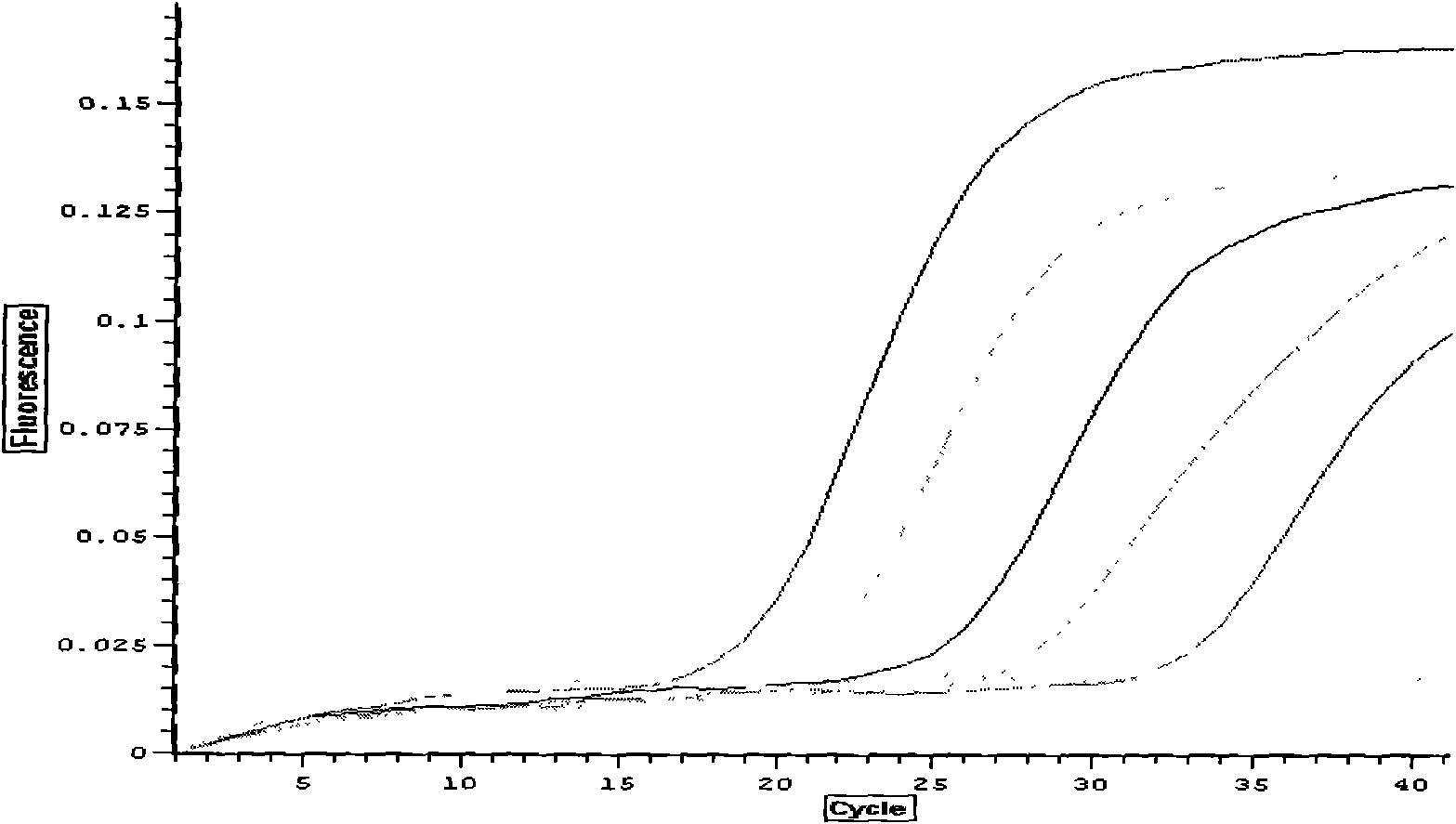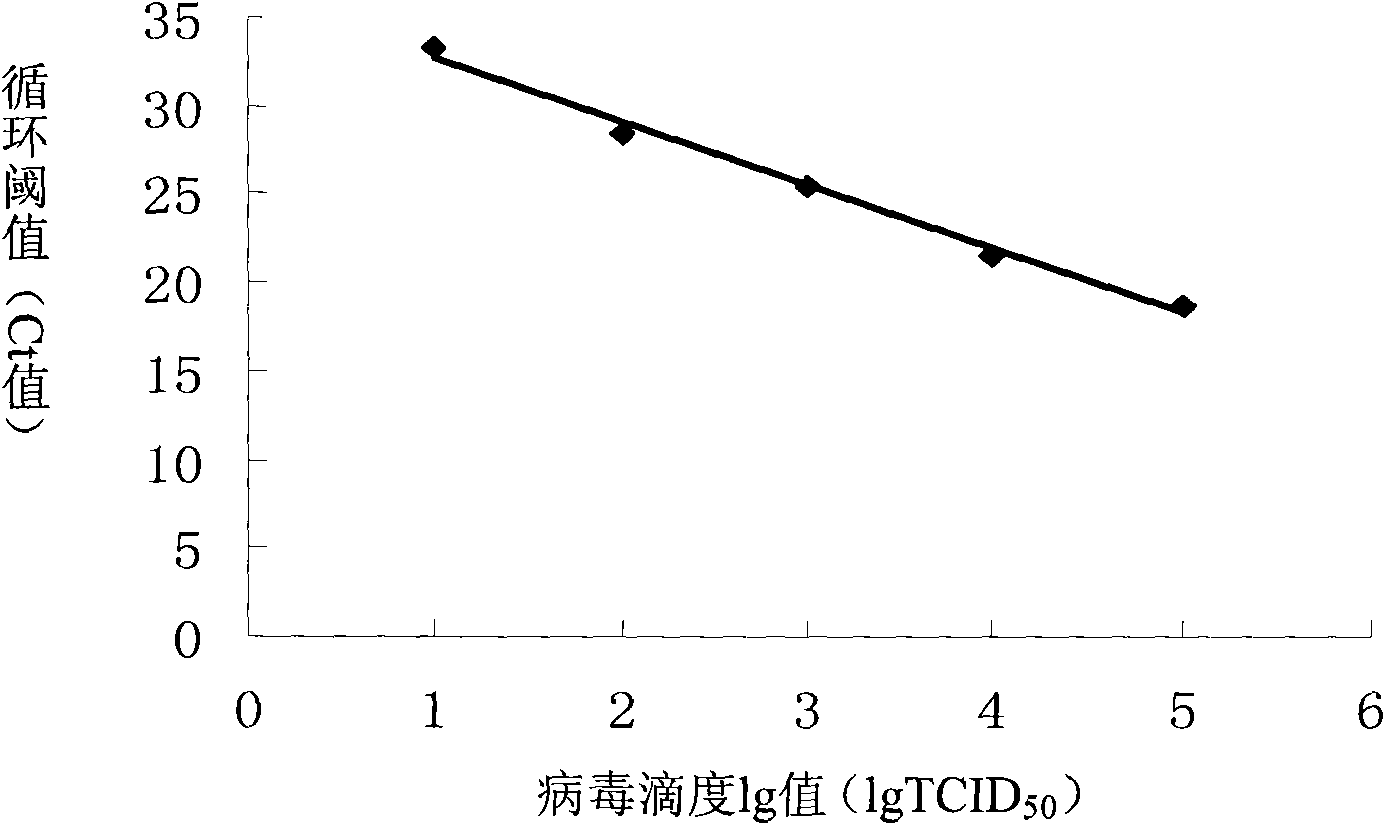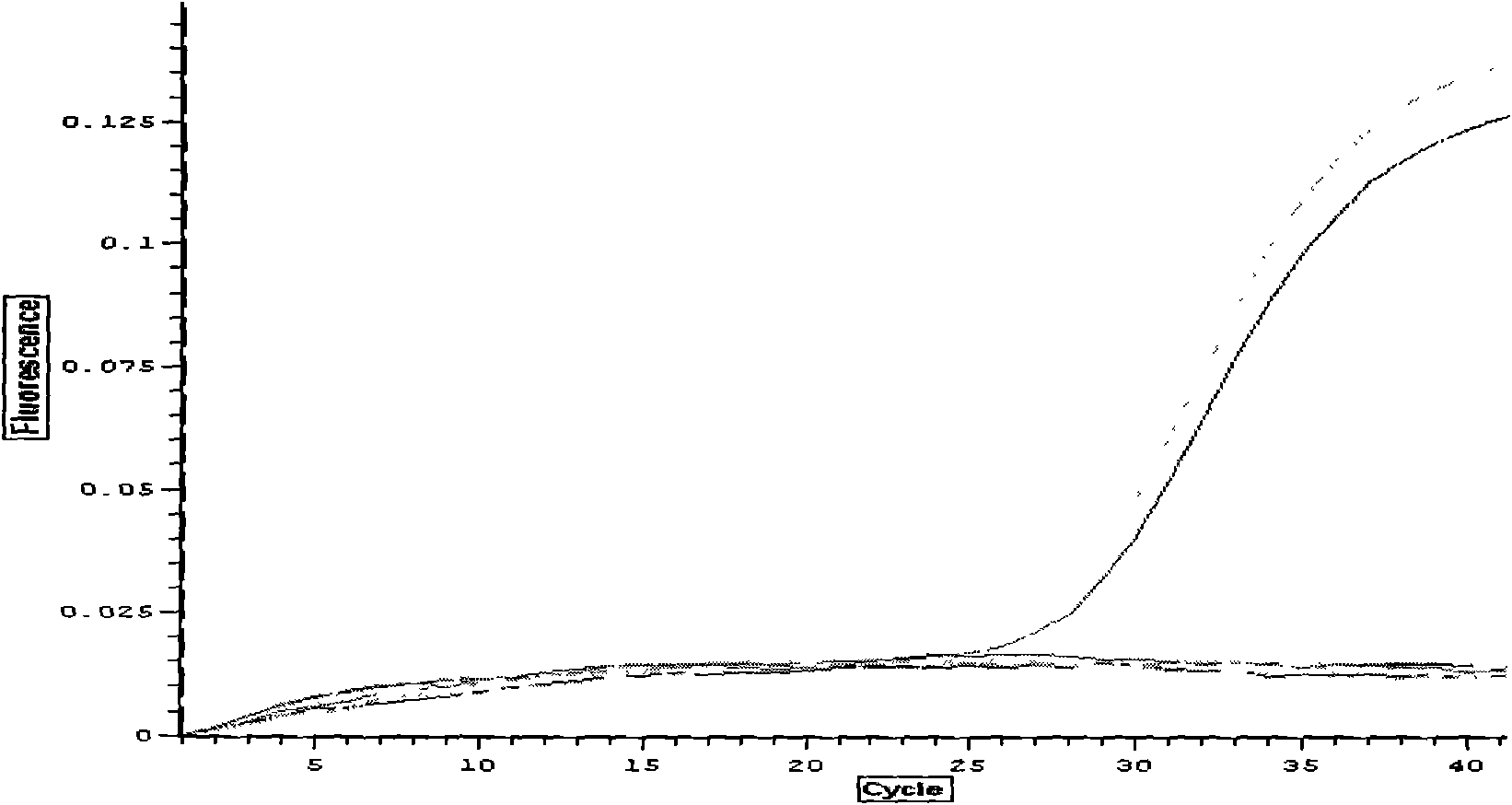Hepatitis a virus detecting method in food
A hepatitis A virus and detection method technology, applied in the field of bioengineering, can solve the problems of high missed detection rate, complicated operation, low sensitivity, etc., and achieve the effect of ensuring safety, high sensitivity and specificity
- Summary
- Abstract
- Description
- Claims
- Application Information
AI Technical Summary
Problems solved by technology
Method used
Image
Examples
Embodiment 1
[0024] Example 1: Design and synthesis of primers
[0025] According to the sequence of Hepatitis A in Genbank database, Primer Premier 5.0 software was used to design primers, and the primer sequences are shown in Table 1.
[0026] Table 1 Hepatitis A virus primer sequence
[0027] Primer
[0028] The primers were synthesized by the solid-phase phosphoramidite triester method and entrusted to Shanghai Yingjun Biotechnology Co., Ltd. to complete.
Embodiment 2
[0029] Embodiment two: the processing of standard sample
[0030] Dissolve the hepatitis A live attenuated vaccine powder with 1.0ml of water for injection, and the amount of live virus contained in it is 10 7.0 TCID 50 , stored at 4°C for later use.
[0031] Dilute the above-mentioned hepatitis A live attenuated vaccine solution into 10 5.0 TCID 50 、10 4.0 TCID 50 、10 3.0 TCID 50 、10 2.0 TCID 50 、10 1.0 TCID 50 、10 0 TCID 50 A total of 6 concentration gradients were stored at 4°C for future use.
Embodiment 3
[0032] Embodiment three: the processing of sample to be tested
[0033] 1. Processing of shellfish samples
[0034]Dissect and remove the intestinal tissue from shellfish, take 1.5g sample and add 15ml Tris_HCL buffer (pH=7.4, 0.05mol / L), homogenate on ice; put the homogenate into a 50ml centrifuge tube, and incubate at 37°C for 30min ;Centrifuge at 5,000g for 20min at 4°C, collect the supernatant into a new tube; add PEG-8000 at a concentration of 10% of the supernatant, add NaCl at a final concentration of 0.4mol / L, and place overnight at 4°C; The next day, centrifuge at 10,000g for 5min at 4°C, and take the precipitate; add 10ml of Tris_HCL buffer solution to the precipitate, add an equal amount of chloroform after fully dissolving, shake at room temperature for 30min; centrifuge at 2,000g for 30min at 4°C, and take the upper layer of water Phase, stored at -20°C for future inspection.
[0035] 2. Processing of meat samples
[0036] Directly weigh 1.5g of meat products (...
PUM
 Login to View More
Login to View More Abstract
Description
Claims
Application Information
 Login to View More
Login to View More - R&D
- Intellectual Property
- Life Sciences
- Materials
- Tech Scout
- Unparalleled Data Quality
- Higher Quality Content
- 60% Fewer Hallucinations
Browse by: Latest US Patents, China's latest patents, Technical Efficacy Thesaurus, Application Domain, Technology Topic, Popular Technical Reports.
© 2025 PatSnap. All rights reserved.Legal|Privacy policy|Modern Slavery Act Transparency Statement|Sitemap|About US| Contact US: help@patsnap.com



